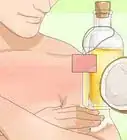This article was medically reviewed by Luba Lee, FNP-BC, MS. Luba Lee, FNP-BC is a Board-Certified Family Nurse Practitioner (FNP) and educator in Tennessee with over a decade of clinical experience. Luba has certifications in Pediatric Advanced Life Support (PALS), Emergency Medicine, Advanced Cardiac Life Support (ACLS), Team Building, and Critical Care Nursing. She received her Master of Science in Nursing (MSN) from the University of Tennessee in 2006.
wikiHow marks an article as reader-approved once it receives enough positive feedback. This article received 15 testimonials and 80% of readers who voted found it helpful, earning it our reader-approved status.
This article has been viewed 859,548 times.
Human skin cells are constantly shedding and being replaced. When skin is damaged by excessive sun exposure, a large groups of damaged cells all shed at once, causing visible white sections of skin to peel and slough off. This can be visually unattractive and is also uncomfortable, since the surrounding skin is often burned, blistered and dry. The best way to prevent skin peeling after sunburn is to avoid sunburn in the first place by liberally applying sunscreen with a high level of protection. When sunscreen is forgotten or incorrectly applied and a sunburn appears, the skin has already been irreversibly damaged. But the pain and discomfort of peeling skin can be eased by keeping the sunburned area moisturized and free of irritants and by consuming a healthy diet.
Steps
Preventing Immediate Peeling
-
1Hydrate your body. Drink plenty of water to keep your skin hydrated and moisturized, so your skin can adequately work on repairing itself. Sun exposure increases fluid loss and dehydration in skin, so it is important to replenish the lost fluids in your body after a sunburn.
- Your best option is to drink water. However, you can also try drinking some unsweetened ice tea. The antioxidants in green and black tea may help repair free radical damage from the sun.[1]
-
2Use a cool compress on the area for 20-30 minutes every 3-4 hours. Use a rag soaked in cool water or a bag of ice wrapped in a towel. Place the cool compress against your sunburned skin for up to 20-30 minutes. Repeat the process every 3-4 hours for the next few days.[2]
- This will cool your skin and help it heal faster.
- Use a clean rag or towel each time.
Advertisement -
3Avoid further sun damage. Spending time outdoors without protecting your already damaged skin will increase the risk of peeling, and worsen your burn. This is because the outer protective dead skin cell layer is damaged, so more harmful UV rays will pass through this layer of skin.[3]
- Wear a broad spectrum sunscreen with an SPF 30 or higher if you are going to be outside with already sun damaged skin. Also wear protective clothing and accessories (hats, sunglasses) to prevent further damage.[4]
-
4Take an oatmeal bath. The soothing and moisturizing properties in oatmeal can help the skin retain its natural moisture and prevent burned skin from peeling. To make an oatmeal bath, stir 1-3 cups of oatmeal into a bathtub filled with warm water. Soak in the oatmeal bath from 15-30 minutes, and rinse your body with clean water when you are finished soaking in the oatmeal.
- After your oatmeal soak, apply a moisturizer to your body to further add hydration to your skin.
- Consider following this remedy daily before going to bed to give your skin the best chance of not peeling after a sunburn.
-
5Apply aloe vera to your sunburned skin. Aloe vera is a natural cactus extract that has long been hailed around the world for its soothing properties. You can buy an aloe vera lotion, pure aloe vera gel, or break open an aloe vera plant, and apply the plant juices directly to your peeling skin.[5] The aloe vera can aid healing, fight the sunburn pain, and avoid infection.
Utilizing Other Peeling Solutions
-
1Apply a moisturizer. Apply a moisturizer to the sunburned areas of your skin. There are specially designed moisturizers to for recently sunburned skin that are available in most drugstores. Avoid moisturizers that contain alcohols, petroleum, benzocaine, lidocaine, retinols, and AHAs (alpha hydroxyl acids), which can dry out and further irritate sensitive skin.[8]
- Apply the moisturizer throughout the day if possible, and immediately after bathing to ensure maximum moisturizer absorption.[9]
- Never use baby oil, coconut oil, petroleum products, or glycerin-based moisturizers on sunburns. They normally create a protective layer on your skin, but this can trap in the heat from a sunburn, making it worse.
-
2Apply a green or black tea compress to your sunburned skin. The tannic acids that occur naturally in tea are a great remedy for sun-damaged skin. Steep a pot of black tea and cool it in the refrigerator before applying it to your burned skin using a compress or spray bottle.
- The tea will help reduce inflammation, decrease redness and promote healing.
- You can also try pressing the actual tea bags onto your skin rather than using a compress or spray bottle.
-
3Take a baking soda bath. A baking soda bath can help restore your skin’s pH balance and help soothe the burn irritation. Add about ¾ cup of baking soda to the bathwater, and soak for 15-20 minutes before rinsing your skin with clean water.[10]
-
4Apply vinegar to your sunburned skin. Pour white or apple cider vinegar in a spray bottle, and mist the vinegar onto your sunburn. The vinegar can help to prevent unsightly blisters and prevent peeling.
- If the smell is too offensive, you can mix a solution of 1 part water and 1 part vinegar, and spray that into your skin instead.
-
5Apply whole milk to your sunburned skin. Soak a washcloth in cold whole milk, and wring out the excess milk. Then apply the washcloth to the sunburned area of skin and leave the cloth on your skin for 10 minutes. Then wash the area with clean water. Repeat this process 2-3 times daily until your skin is completely healed from the burn.
- Milk is very beneficial to burned skin because the protein in the milk has a soothing effect, while the lactic acid can reduce irritation and itching on the burned skin.
-
6Apply mint leaves to your sunburned skin. Mint leaves can help stop the process of peeling and instead promote skin that is smooth and healthy. To use this remedy, take fresh mint leaves and crush them in a bowl to extract their juice then apply the juice directly to the part of your face that is peeling.[13]
-
7Consume a balanced diet. A balanced and nutritious diet that is high in water, fruits, vegetables, and lean meats can keep your skin healthy, and reduce the negative effects of sunburn and peeling.
- Eat plenty of protein, iron, and foods that contain vitamins A, C and E. These nutrients help ensure your skin is prepared to heal from a sunburn.
Avoiding Actions That Encourage Peeling
-
1Avoid scratching your skin. Sunburned skin often itches, but scratching or peeling away your skin will only increase tissue damage on the sunburned areas, increase peeling, and promote the risk of a skin infection.[14]
- If you get the urge to scratch your sunburn, try applying an ice cube wrapped in cloth or a damp paper towel to your skin and rubbing the area in small circles to offer temporary itch relief.
- If you absolutely must remove some peeled skin, do not pull on the skin, no matter how tempting it might be. Instead, use a small pair of scissors and carefully cut away that section of skin.[15]
-
2Avoid bathing with hot water or harsh soap. Try bathing and showering with cool to lukewarm water, rather than using hot water. The hot water will dry out your skin and promote peeling, whereas the cooler water will feel better on your skin and reduce the likelihood of peeling. Use a mild soap, preferably one that's fragrance free. Harsh soaps and fragrances may irritate your skin.[16]
- Also avoid rubbing your skin dry after bathing, as you could rub off the outermost, burned layer of your skin, causing peeling.
-
3Avoid using harsh cleansers or exfoliates. Soap can be very drying to skin, and when you have a sunburn, you want your skin to stay as moisturized as possible to promote healing and prevent peeling. Keep the soap use to a minimum, being sure to avoid using it on particularly burned areas of your skin.
- If you do use soap, try to refrain from using a washcloth or loofah to apply to soap. The rough surfaces of those materials may irritate your skin and encourage peeling.
- Choose a mild cleansing soap, such as Dove, Basis, or Oil of Olay Sensitive Skin to clean your face, underarms, feet, and groin. Simply rinse the rest of your body with water.
- Also, try to avoid shaving and waxing. If you must shave, try to use a rich, moisturizing shaving cream, gel, or lotion.[17]
Expert Q&A
Did you know you can get expert answers for this article?
Unlock expert answers by supporting wikiHow
-
QuestionHow long until it will feel better?
 Luba Lee, FNP-BC, MSLuba Lee, FNP-BC is a Board-Certified Family Nurse Practitioner (FNP) and educator in Tennessee with over a decade of clinical experience. Luba has certifications in Pediatric Advanced Life Support (PALS), Emergency Medicine, Advanced Cardiac Life Support (ACLS), Team Building, and Critical Care Nursing. She received her Master of Science in Nursing (MSN) from the University of Tennessee in 2006.
Luba Lee, FNP-BC, MSLuba Lee, FNP-BC is a Board-Certified Family Nurse Practitioner (FNP) and educator in Tennessee with over a decade of clinical experience. Luba has certifications in Pediatric Advanced Life Support (PALS), Emergency Medicine, Advanced Cardiac Life Support (ACLS), Team Building, and Critical Care Nursing. She received her Master of Science in Nursing (MSN) from the University of Tennessee in 2006.
Board-Certified Family Nurse Practitioner Peeling usually starts within 3 days of a sunburn. After your skin starts peeling, it will likely take a week to heal. Keep your skin moisturized, protect it from further sun damage, and avoid picking at the blisters to help your skin heal faster. Don't forget to stay hydrated, be active, and eat nutritious meals to help your body heal quickly!
Peeling usually starts within 3 days of a sunburn. After your skin starts peeling, it will likely take a week to heal. Keep your skin moisturized, protect it from further sun damage, and avoid picking at the blisters to help your skin heal faster. Don't forget to stay hydrated, be active, and eat nutritious meals to help your body heal quickly! -
QuestionCan I use lotion if my skin is peeling?
 Luba Lee, FNP-BC, MSLuba Lee, FNP-BC is a Board-Certified Family Nurse Practitioner (FNP) and educator in Tennessee with over a decade of clinical experience. Luba has certifications in Pediatric Advanced Life Support (PALS), Emergency Medicine, Advanced Cardiac Life Support (ACLS), Team Building, and Critical Care Nursing. She received her Master of Science in Nursing (MSN) from the University of Tennessee in 2006.
Luba Lee, FNP-BC, MSLuba Lee, FNP-BC is a Board-Certified Family Nurse Practitioner (FNP) and educator in Tennessee with over a decade of clinical experience. Luba has certifications in Pediatric Advanced Life Support (PALS), Emergency Medicine, Advanced Cardiac Life Support (ACLS), Team Building, and Critical Care Nursing. She received her Master of Science in Nursing (MSN) from the University of Tennessee in 2006.
Board-Certified Family Nurse Practitioner Yes, you can use lotion on peeling skin. In fact, moisturizers are important for helping your skin heal and to prevent more severe peeling. Apply a lotion that contains aloe vera several times a day. However, don't use any moisturizers containing petroleum, benzocaine, or lidocaine, which can worsen the peeling.
Yes, you can use lotion on peeling skin. In fact, moisturizers are important for helping your skin heal and to prevent more severe peeling. Apply a lotion that contains aloe vera several times a day. However, don't use any moisturizers containing petroleum, benzocaine, or lidocaine, which can worsen the peeling.
Warnings
- Frequent sunburn can lead to cancer, premature aging and blisters. Unprotected sun exposure should be avoided at all costs. Always wear sunscreen with SPF 30 or higher while outdoors, and frequently re-apply sunscreen, especially if you get wet.⧼thumbs_response⧽
- Consult a physician if you have excessive peeling skin that is not the result of recent sun exposure, as there are some medical conditions that cause the skin to peel.⧼thumbs_response⧽
References
- ↑ http://www.womenshealthmag.com/beauty/you-have-a-sunburn-now-what
- ↑ https://www.skincancer.org/prevention/sunburn/five-ways-to-treat-a-sunburn
- ↑ https://drbaileyskincare.com/blogs/blog/how-to-treat-a-sunburn
- ↑ https://drbaileyskincare.com/blogs/blog/how-to-treat-a-sunburn
- ↑ http://www.sheknows.com/beauty-and-style/articles/804520/dealing-with-sunburned-peeling-skin
- ↑ http://www.womenshealthmag.com/beauty/you-have-a-sunburn-now-what
- ↑ http://www.womenshealthmag.com/beauty/you-have-a-sunburn-now-what
- ↑ http://www.womenshealthmag.com/beauty/you-have-a-sunburn-now-what
- ↑ http://www.womenshealthmag.com/beauty/you-have-a-sunburn-now-what
- ↑ http://www.womenshealthmag.com/beauty/you-have-a-sunburn-now-what
- ↑ http://www.womenshealthmag.com/beauty/you-have-a-sunburn-now-what
- ↑ http://www.womenshealthmag.com/beauty/you-have-a-sunburn-now-what
- ↑ http://www.newhealthguide.org/Peeling-Skin.html
- ↑ http://www.newhealthguide.org/Peeling-Skin.html
- ↑ http://www.sheknows.com/beauty-and-style/articles/804520/dealing-with-sunburned-peeling-skin
- ↑ http://www.sheknows.com/beauty-and-style/articles/804520/dealing-with-sunburned-peeling-skin
- ↑ http://www.womenshealthmag.com/beauty/you-have-a-sunburn-now-what
About This Article
To prevent your skin from peeling after a sunburn, stir 1-3 cups of oatmeal into your bath and soak for 15-30 minutes, since oatmeal has soothing and moisturizing properties. Alternatively, add ¾ of a cup of baking soda to your bath and soak for 15-20 minutes to help restore your skin’s pH balance. You can also try applying vinegar, whole milk, or mint leaves to your peeling skin, all of which can help stop peeling. No matter what you try, be sure to apply moisturizer after you bathe and throughout the day to keep your skin hydrated. To learn how what you eat and drink can help keep your skin from peeling after it’s been burned, scroll down!
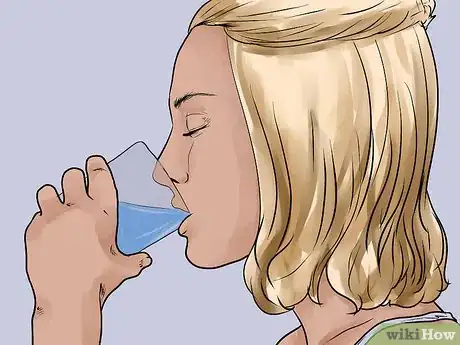

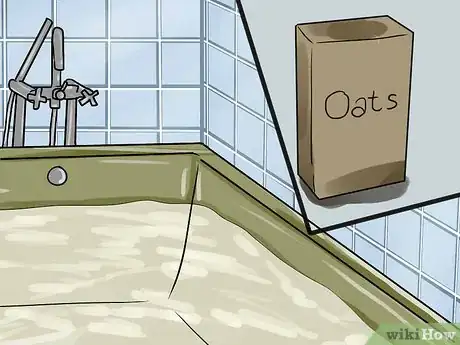
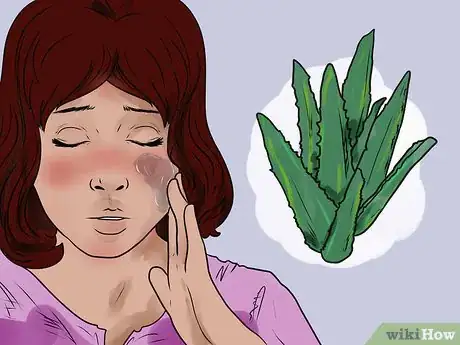
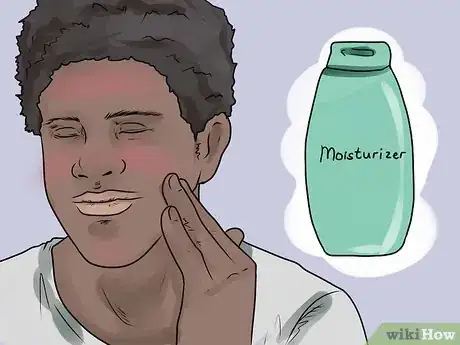
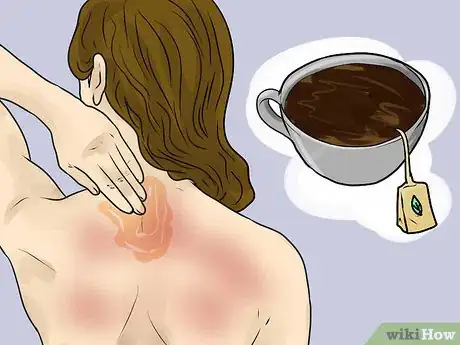

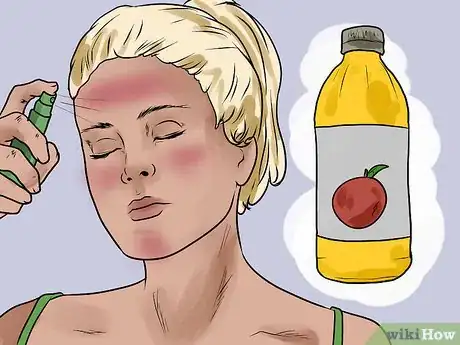

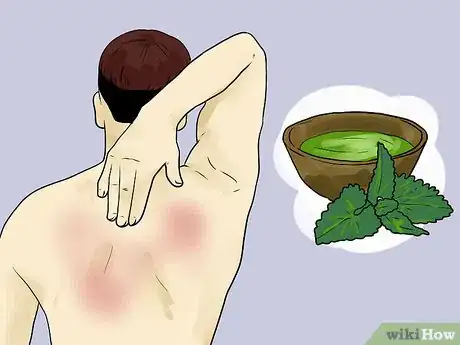
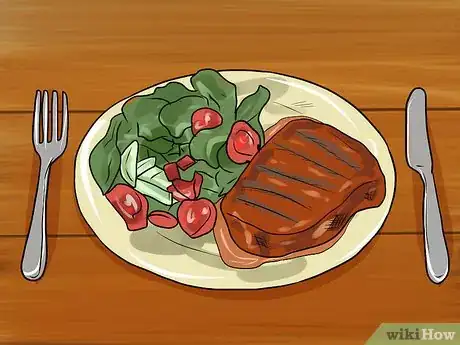
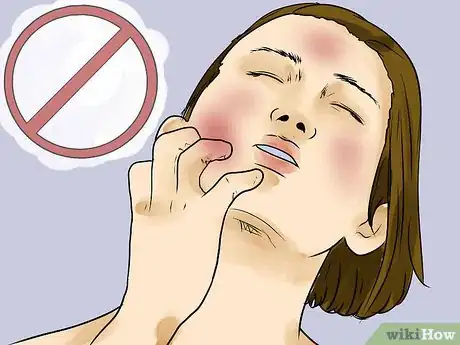
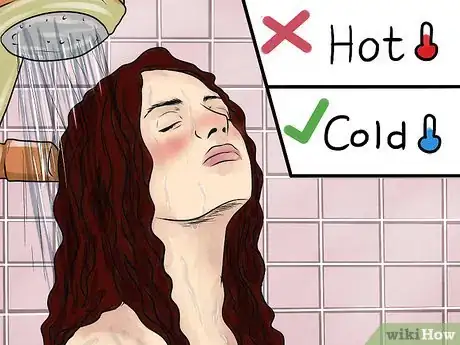
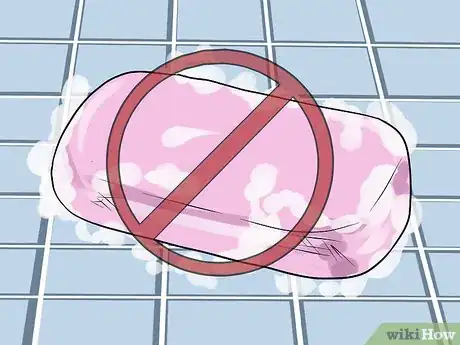


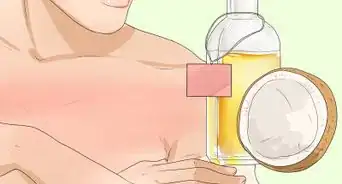
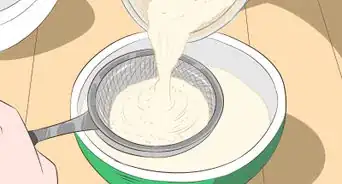
-Step-11-Version-2.webp)
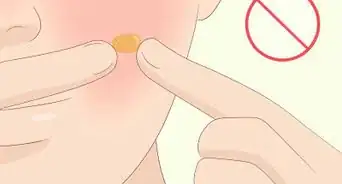



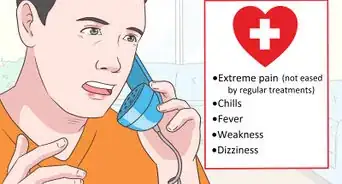

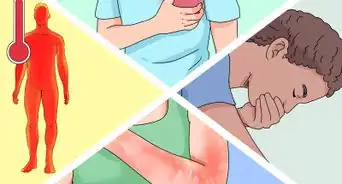
-Step-10.webp)












